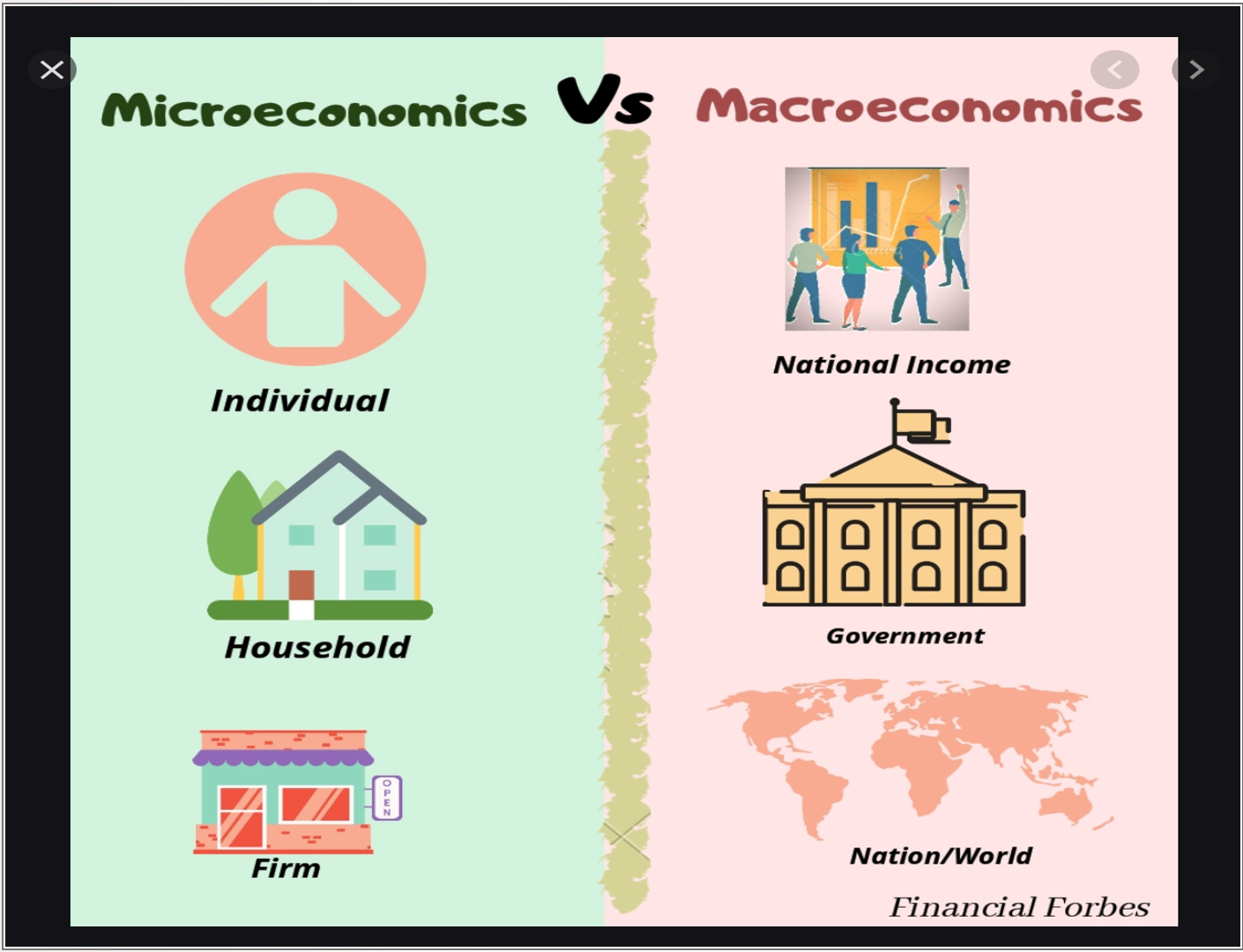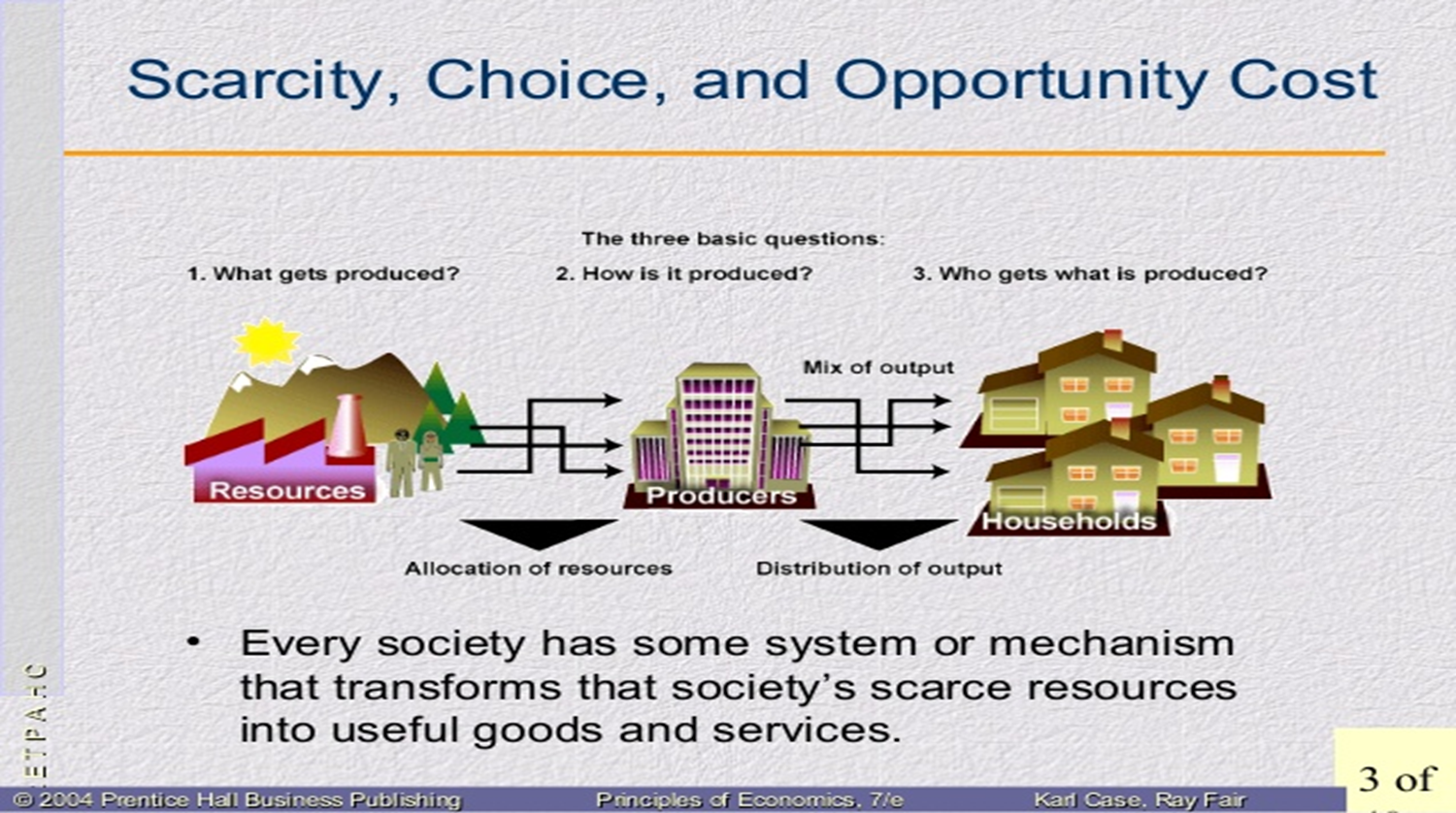C1: INTRODUCTION TO MICROECONOMICS
1/12
There's no tags or description
Looks like no tags are added yet.
Name | Mastery | Learn | Test | Matching | Spaced |
|---|
No study sessions yet.
13 Terms
DEFINITION OF ECONOMICS
Economics is a science which studies human behaviors as a relationship between ends and scarce means, which have alternative uses.
OR
Economics is a study of how people use their limited resources to try to fulfil unlimited wants and involves alternatives or choices.
RESOURCES/ FACTORS OF PRODUCTION
Land
Labour
Capital
Enterprise
ECONOMICS
Limited > Production > Purchased by consumer > satisfy needs and wants (unlimited)
MICROECONOMICS VS MACROECONOMICS
MICROECONOMICS
The study of individual parts of the economy such as public choices, business choices and personal choices
MACROECONOMICS
The study of the economic system as a whole such as national income, trade cycle, unemployment rate, inflation and general price level.

POSITIVE VS. NORMATIVE ANALYSIS
A positive analysis is to deal with the question of “what is” and no indication of approval or disapproval. It focuses on facts and cause-and-effect relationships.
A normative analysis is to deal with the question of “what ought to be”. It incorporates value judgements about what the economy should be or what policy should be used to achieve economic goals.
BASIC ECONOMIC CONCEPTS

1. SCARCITY
One of the important concepts in economics is scarcity
Scarcity is defined as wants always exceed limited resources to satisfy them.
Limited resources vs unlimited funds
Scarcity is a universal problem faced by poor as well as rich nations in order to fulfil their needs.
CHOICE
When Scarcity exists, choices are to be made
OPPURTUNITY COSTS
Opportunity cost is defined as the second best alternative that has to be forgone for another choice which gives more satisfaction.
BASIC ECONOMIC PROBLEMS
WHAT TO PRODUCE?
Refers to the type of goods and services to be produced
HOW TO PRODUCE?
Refers to the cheapest method of production
FOR WHOM TO PRODUCE
Refers to the distribution of income
PRODUCTION POSSIBILITIES CURVE (PPC) /REFER SLIDE/
Used to explain the basic economic concepts: Scarcity, Choices and Opportunity cost
DEFINITION
The PPC shows the various possible combinations of goods and services produced within a specified time period with all its resources fully and efficiently employed.
ASSUMPTIONS
The economy is operating in full employment and full production capacity (full efficiency).
The amount of resources available are fixed
The state of technology does not change throughout the production
FACTORS THAT SHIFT THE PPC (REFER SLIDE)
Economic Growth
Improvements in Technology
Population
TYPES OF ECONOMIC SYSTEM
Capitalism
Socialism
Mixed
CAPITALISM /
Free market economy
An economic system where individuals and sellers make economic decisions using a price system
CHARACTERISTICS
Private ownership of resources
Freedom of enterprise and choice
Consumers’ sovereignty
Competition
Government intervention
Price System
Strength
Production according to customer needs
Economic freedom
Efficient utilization of resources
Variety of consumer goods
Enhance trade, business and R&D
Automatic Incentives
Flexibilities
Weaknesses
Inequality of distribution of wealth and income
Inflation and high unemployment rate
Lack of social welfare
Wasteful competition
Misallocation of resources
Social cost
SOCIALISM/ Planned Economy
An economic system where all the economic decisions are made by the government or a central authority
Characteristics
Public ownership of resources
Central planning authority
Price mechanism of lesser importance
Central control and ownership
Strength
Production according to basic need
Equal distribution of income and wealth
Better allocation of resources
No serious unemployment or inflation
Rapid economic development
Social welfare
Weaknesses
Lack of incentives and initiative by individuals
Loss of economic freedom and consumer sovereignty
Absence of competition
Waste of economic resources
MIXED ECONOMY
An economic system which combines both capitalism and socialism
Characteristics
Public and private ownership of resources
Price mechanism and economic plans in making decisions
Government helps to control income disparity
Government intervention in the economy
Co-operation between the government, public and business sectors
Government control of monopolies